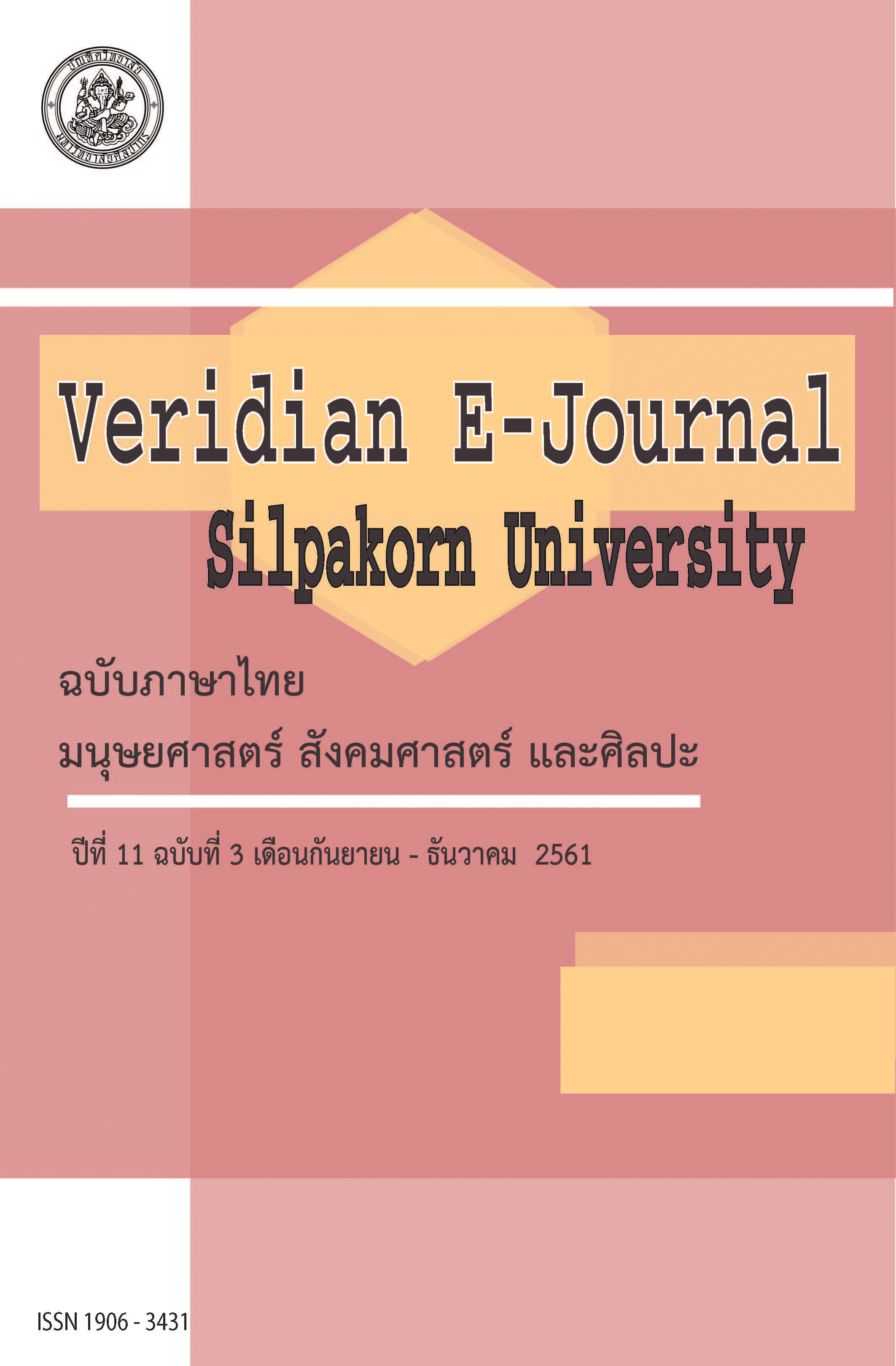“ชาติ” ในวิถีพิพิธภัณฑ์แห่งชาติ จีน ญี่ปุ่น เกาหลี และไต้หวัน (“Nation” in the Nation Museum of China Japan Korea and Taiwan)
Main Article Content
บทคัดย่อ
งานวิจัยชิ้นนี้มีวัตถุประสงค์เพื่อนำเสนอภาพของชาติที่พิพิธภัณฑ์แห่งชาติและพิพิธภัณฑ์ประวัติศาสตร์แห่งชาติของ จีน ญี่ปุ่น เกาหลี และไต้หวันจัดแสดงให้ประชาชนได้เข้าใจและภาคภูมิใจถึงความเป็นมาของชาติตน และภาพความสัมพันธ์ของ 4 ประเทศที่มีความเกี่ยวข้องกันอย่างใกล้ชิดตั้งแต่อดีตจนถึงปัจจุบัน รวมทั้งแนวทางการจัดแสดงของพิพิธภัณฑ์ที่มีประโยชน์สามารถนำมาปรับใช้ให้เหมาะสมกับพิพิธภัณฑสถานแห่งชาติ พระนครของไทย
ผลจากการศึกษาพบว่า เรื่องราวของชาติที่พิพิธภัณฑ์แห่งชาติของจีน ญี่ป่น เกาหลี และไต้หวันนำเสนอเป็นไปในแนวทางใกล้เคียงกัน คือแสดงให้เห็นความยิ่งใหญ่ทางอารยธรรม/วัฒนธรรมที่มีความเป็นมาที่ยาวนาน พัฒนาการความรุ่งเรืองของชาติและความสามารถของบรรพบุรุษ ส่วนในพิพิธภัณฑ์ประวัติศาสตร์แห่งชาติผลจากการศึกษาพบว่าประเทศ ญี่ปุ่น เกาหลี และไต้หวัน มีวิธีการเลือกเหตุการณ์ในประวัติศาสตร์เพื่อนำมาบอกเล่าในพิพิธภัณฑ์ที่เหมือนกันคือพิจารณาเหตุการณ์ประวัติศาสตร์บนพื้นฐานที่เกี่ยวโยงกับปัจจุบัน
ทางด้านความสัมพันธ์ระหว่าง 4 ประเทศ เรื่องราวที่ปรากฏในพิพิธภัณฑ์แห่งชาติส่วนใหญ่เป็นไปในทางบวก แสดงให้เห็นความสัมพันธ์ที่เป็นไมตรีด้วยการแลกเปลี่ยนทางการค้าและวัฒนธรรมระหว่างกัน ขณะที่เรื่องราวที่นำเสนอในพิพิธภัณฑ์ประวัติศาสตร์แห่งชาติ แบ่งได้ 2 แนวทาง
แนวทางแรก - มุมมองของเพื่อนบ้านที่มีต่อญี่ปุ่น สำหรับจีนและเกาหลี ภาพของญี่ปุ่นในพิพิธภัณฑ์ประวัติศาสตร์ของ 2 ประเทศคือ “ผู้รุกราน” ขณะที่ไต้หวันนำเสนอเรื่องราวญี่ปุ่นทั้งด้านบวกและลบ ในฐานะ “ผู้ยึดครองและผู้สร้างความทันสมัยในประวัติศาสตร์ไต้หวัน”
แนวทางที่ 2 - มุมมองของญี่ปุ่นที่มีต่อเพื่อนบ้าน ญี่ปุ่นเลือกที่จะนำเสนอเรื่องการแลกเปลี่ยนทางวัฒนธรรมและการติดต่อค้าขายกับต่างประเทศเป็นแกนหลักของนิทรรศการ ดังนั้นมุมมองของญี่ปุ่นที่มีต่อเพื่อนบ้านโดยเฉพาะจีนและเกาหลีจึงเป็นไปในทางบวก
สำหรับแนวทางที่น่าจะนำมาปรับใช้กับพิพิธภัณฑสถานแห่งชาติของไทยมี 3 รูปแบบ คือ รูปแบบแรกปรับเนื้อหาและวิธีการนำเสนอ รูปแบบที่ 2 ปรับโครงสร้างโดยรวม และรูปแบบพิเศษ นำรูปแบบและระบบ “พิพิธภัณฑ์เด็ก” มาเป็นส่วนเสริมเพื่อให้เด็กมีความคุ้นเคยและสนใจกิจกรรมของพิพิธภัณฑ์
The purposes of this research are to present the nation’s image which are exhibited at Chinese, Japanese, Korean, and Taiwanese National Museums and at National Museums of History in order to build their citizens’ understanding and proudness of their country. They also show the close relationships of the four countries from the past up to the present. Moreover, it includes the useful way of exhibition which can be appropriately applied to the exhibition at the Bangkok National Museum.
The result of the study is found that national museums mostly present their stories in the same way; that is, they present their long, great and prosperous civilization and cultures, the development of national prosperity and the talent of their ancestors. In the national museum of history, it is found that Japan, Korea and Taiwan choose some historical incidences to be present in the museums in the same way; that is, they consider the historical incidences based on those related to the present.
As the relationship among the four countries, the stories appeared in the National Museums mostly convey positive meanings. This shows the friendliness in inter-exchanging in trade and cultures, and the stories presented in national historical museums can be divided into 2 ways:
Firstly, the image of Japan seems to be the ‘invaders’ in the viewpoints of China and Korea’s historical museums. However, Taiwan’s museum positively and negatively presents the Japanese stories as ‘the rulers and modernization builders’ in Taiwanese history.
Secondly, Japan’s viewpoints on the neighbors which are exhibited are mainly to present cultural exchange and trading with other countries. Thus, Japanese viewpoints on neighbors, especially China and Korea, seem positive.
The 3 ways to be adapted for being appropriately used in Thai National Museums are as follows: the first way is to adjust in content and method of presentation; the second way is to adjust the whole structure; and the last and special way is to bring in the format and system of ‘Children Museum’ to be the especially part of the museums in order to help the children to be familiar and interested in the activities of the museums.

